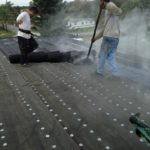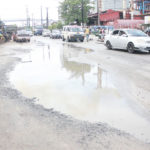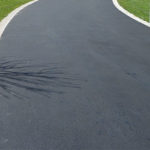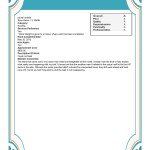Can You Lay Asphalt in the Rain?
 Asphalt is a term that refers to all mixtures of aggregate (crushed rock) and the petrochemical product bitumen. These products comprise hot-mix and cold-mix asphalt and Macadam, which is also known as tar-chip paving. Cold-mix asphalt is mixed with water and a chemical emulsifier. It doesn’t need the heating necessary in hot-mix, nevertheless takes about two weeks versus a few days to set up. It isn’t used as frequently as hot mix or Macadam but is useful when fixing potholes or paving during cooler weather.
Asphalt is a term that refers to all mixtures of aggregate (crushed rock) and the petrochemical product bitumen. These products comprise hot-mix and cold-mix asphalt and Macadam, which is also known as tar-chip paving. Cold-mix asphalt is mixed with water and a chemical emulsifier. It doesn’t need the heating necessary in hot-mix, nevertheless takes about two weeks versus a few days to set up. It isn’t used as frequently as hot mix or Macadam but is useful when fixing potholes or paving during cooler weather.
The quality and the result of the application of asphalt product will largely depend on the weather. Asphalt is applied over a thick base of crushed rock called aggregate. If there is a lot of water in the aggregate and underlying soil, these base materials won’t compact properly, which can lead to potholes if asphalt is laid before the subbase dries. Dry ground can support more weight than wet ground. A wet subbase makes pavement more susceptible to cracking and caving in. If it rains after the subbase is laid, laying asphalt the following day, even if the sun is shining, won’t be possible.
So, as expected, heavy rain or snow halts a paving project. Asphalt paving cannot be completed while it is raining. Paving must also be delayed if it has rained recently enough for the ground to still be wet. There are some exceptions, asphalt laying can be done during light rain even though it is most successful when completed during warm, dry weather. This particularly applied for hot-mix. Asphalt Enterprises website notes that laying hot-mix asphalt during light rain or misty conditions is possible. The reason is that it is an oily material that repels water.
However, one type of asphalt cools too quickly in chilly rain and another hardens slowly or is damaged by excess water. Also, moisture in the gravel and soil subbase of any asphaltic product can lead to problems. So, the road construction crews race against precipitation and the seasons.
With the cold mix, laying asphalt in near-freezing conditions is possible, because it is so flexible in a broad range of temperatures. However, cold mix already contains a lot of water. Too much extra water or freezing temperatures can lead to its failure.
Laying Asphalt in Wet Conditions
Asphalt is made of a mixture that contains oils. These oils repel water, and laying asphalt while it is actively raining will cause unintended results that affect the quality of the projectthe repelling of oil from water means that cracks or holes may form in asphalt that is laid during rainy weather. These cracks can quickly turn into potholes, and it is even possible for potholes to form when asphalt is laid on the wet ground after it has stopped raining.
The damage and quality concerns related to laying asphalt in wet conditions can be observed immediately. The oil that separates from the asphalt as it repels water will rise to the top of the newly surfaced road or parking lot. Craters may form if it is raining immediately after the asphalt has been laid.
It is worth to note the deal situation for laying asphalt when the weather not raining or snowing. Asphalt laying is primarily a summer project in which road crews endure searing sun and drying wind. Warm temperatures give more time to lay a hot-mix asphalt road properly. When installing hot-mix, the temperature should be above 60 degrees F for a layer 1 1/2 inches thick. The hot mix can be laid at 40 degrees F, but cooler temperatures cause it to cool rapidly and require a thicker layer of asphalt to slow the cooling. At 40 degrees F, a 1.5-inch layer becomes inflexible in 16 minutes whereas a 3-inch layer can be worked for 45 minutes. Properly laid asphalt in the suitable condition will remain in excellent shape for several years.
Contact us
 Phone Call |
 Text Message |
 |







